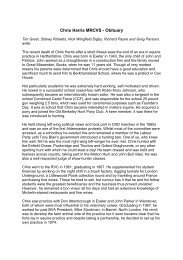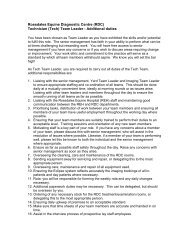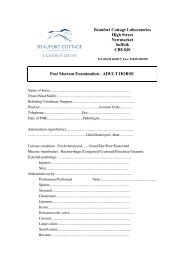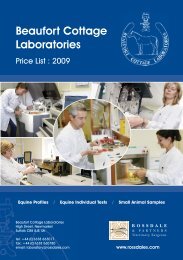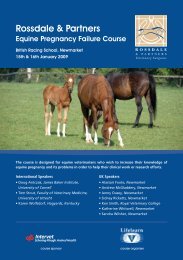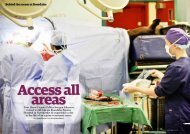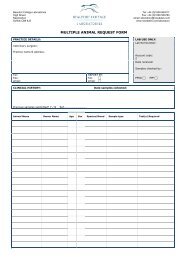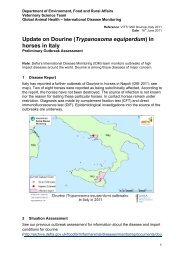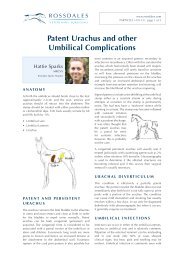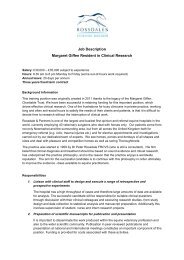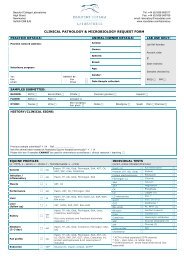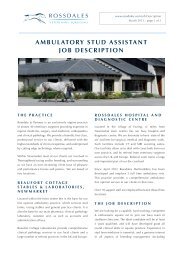EQUINE CLINICAL PATHOLOGY - Rossdale & Partners
EQUINE CLINICAL PATHOLOGY - Rossdale & Partners
EQUINE CLINICAL PATHOLOGY - Rossdale & Partners
Create successful ePaper yourself
Turn your PDF publications into a flip-book with our unique Google optimized e-Paper software.
G u i d e t o e q u i n e c l i n i c a l p a t h o l o g y<br />
in systemic bacterial infections. Non-septic<br />
inflammation can occur following nonpenetrating<br />
injury, e.g. bruising of soft<br />
tissues, tendons, ligaments or periosteum<br />
and traumatic arthritis or tenosynovitis,<br />
sometimes associated with degenerative<br />
joint disease. Marked leucocytosis is seen<br />
in foals responding to bacterial infections,<br />
notably Rhodococcus equi (‘summer<br />
pneumonia’) and Streptococcus equi<br />
(‘strangles’) infections.<br />
Neutrophilic ‘shifts to the left’ (appearance of<br />
juvenile neutrophils or ‘band’ neutrophils),<br />
while diagnostically helpful in foal-hood<br />
infections, are seldom seen in adult horses<br />
unless severely and acutely infected<br />
with conditions such as acute cellulitis<br />
or lymphangitis. Some cases of acute<br />
salmonellosis, endotoxaemia, peracute<br />
enterocolitis, peritonitis and pleuritis<br />
have neutrophilic shifts to the left, more<br />
commonly associated with leucopenia and<br />
neutropenia.<br />
Leucopenia (low total leucocyte count) and<br />
neutropenia (low segmented neutrophil<br />
count) is most commonly seen in adult<br />
performance horses during the acute phase<br />
of a viral challenge, when there may or<br />
may not be clinical signs. These may<br />
include lethargy, pyrexia, nasal discharge,<br />
coughing and oedematous legs. Leucocytic<br />
changes seen with infection very much<br />
depend upon sampling time in relation<br />
to the stage of the disease process (see<br />
Fig.1).<br />
If the early acute infectious phase has<br />
passed then the leucopenic phase will be<br />
missed and haematologic examinations<br />
will reflect repair and sometimes-secondary<br />
bacterial involvement with leucocytosis and<br />
neutrophilia (see page 14). Therefore, blood<br />
samples should be taken from symptomless<br />
stablemates where viral infections are<br />
suspected, in order to help with diagnosis,<br />
epidemiology and assessment of recovery.<br />
Unfortunately, unless Equine Influenza,<br />
Fig.1: equine blood leucocyte response to viral challenge<br />
14<br />
Circulating blood leucocytes x<br />
10^9/l<br />
12<br />
10<br />
8<br />
6<br />
4<br />
2<br />
0<br />
1 2 3 4 5 6 7 8<br />
Days – Viral challenge starts on day1. Basal leucocyte count is 8 x 10 9 /l<br />
15



